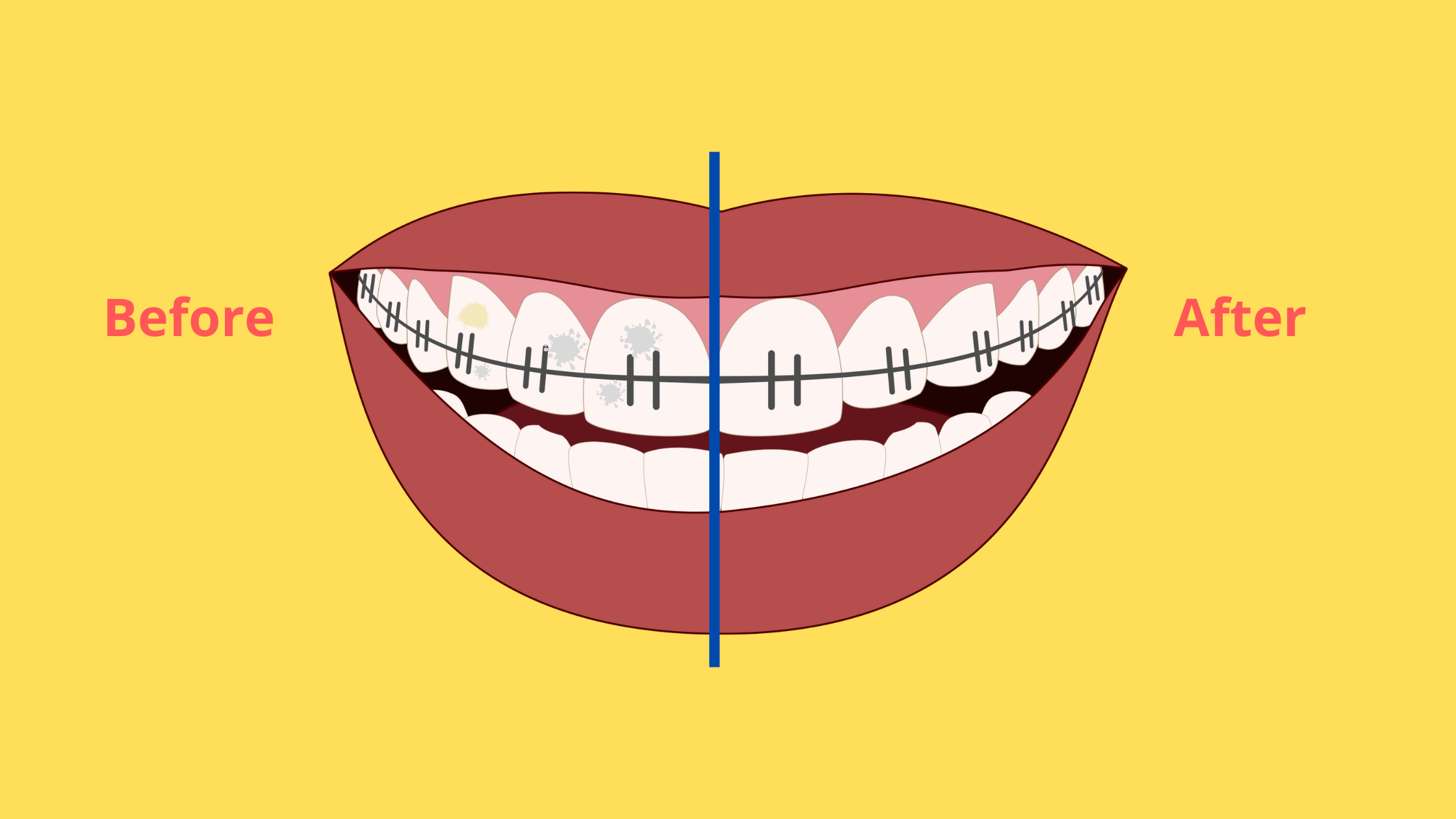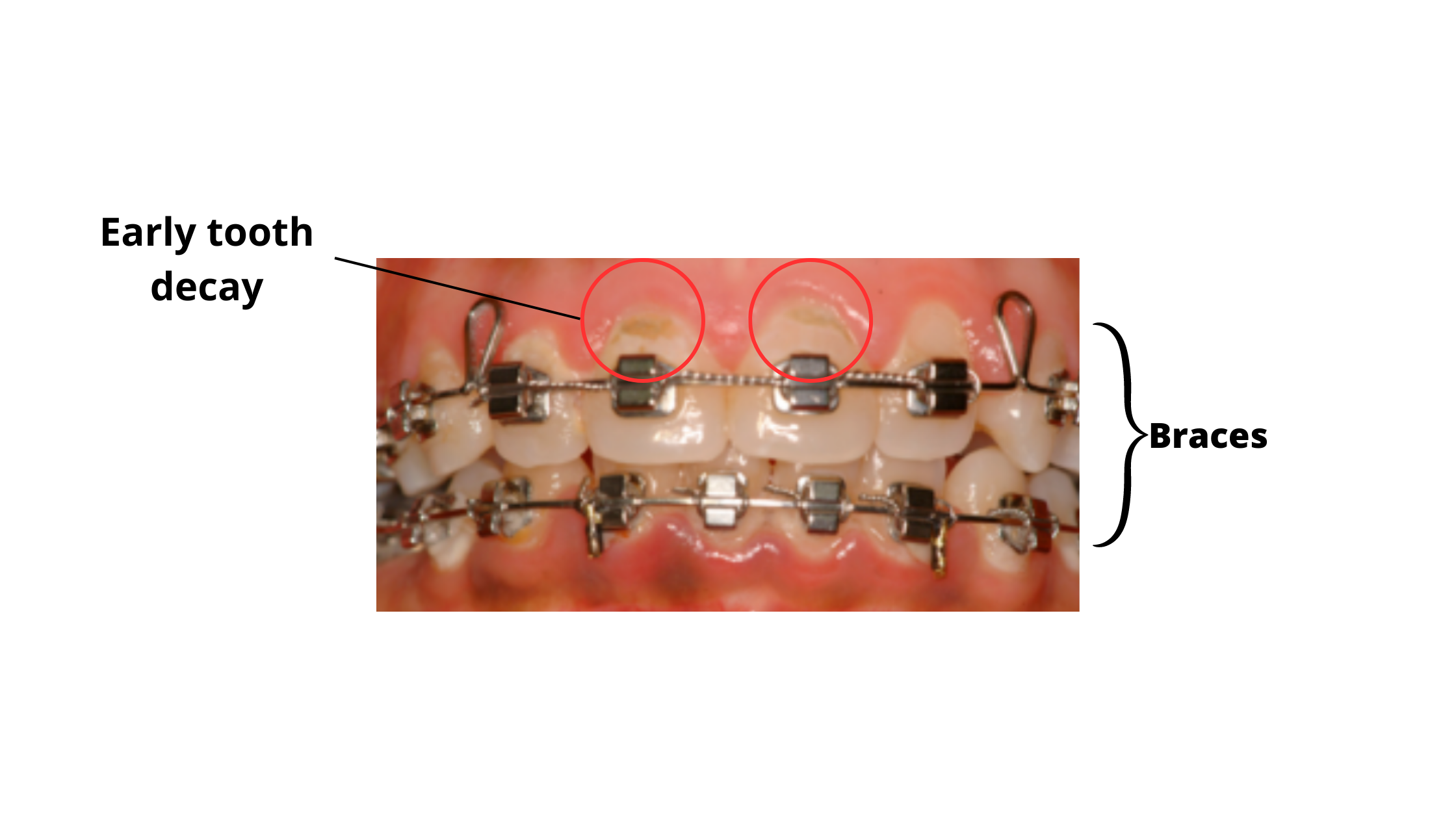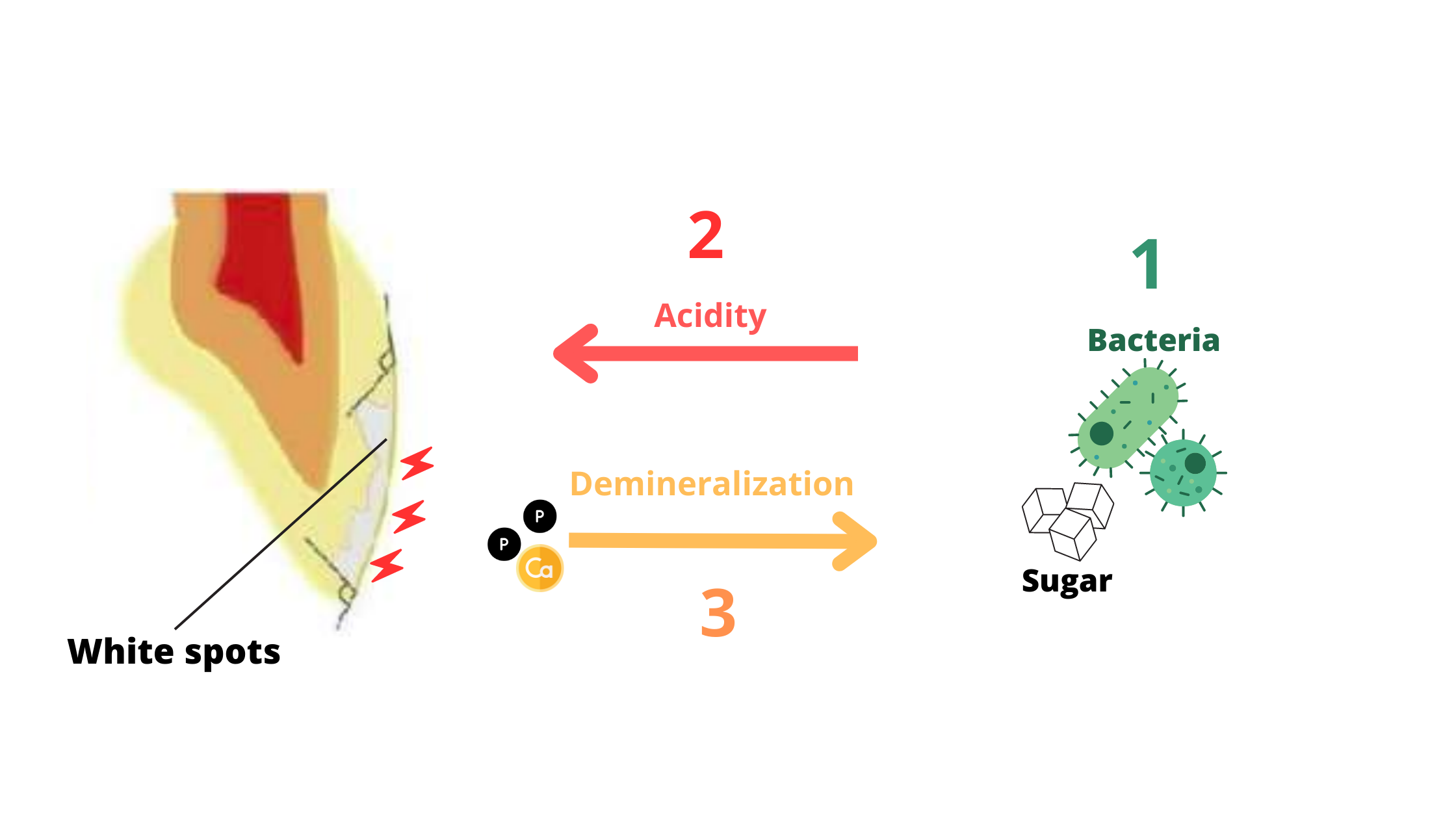Do You Have White Spots on Your Teeth After Braces? Here’s What to Do
 Going through orthodontic treatment isn’t just about waiting for your teeth to straighten. It’s also about keeping them healthy along the way.
Going through orthodontic treatment isn’t just about waiting for your teeth to straighten. It’s also about keeping them healthy along the way.
Braces can make your teeth more prone to decay. It’s actually quite common to see white spots — which are early signs of tooth decay — appear on the front surfaces of your teeth by the time your braces come off. This can be disappointing after all the effort you put in.
The good news is that there are ways to reduce or even reverse them, so you can finally enjoy the smile you’ve been waiting for.
If you’ve noticed white spots after braces, don’t worry. In this post, we’ll explain exactly what they are, why they happen, and how you can get rid of them.
In this article...
What Are These White Spots on My Teeth Around Braces?
White spots that appear after getting braces are often an early sign of tooth decay. They form when your enamel starts to break down and lose minerals.Tooth decay happens when harmful bacteria in your mouth feed on sugars and release acids. Over time, these acids erode your enamel and cause decay to set in.
Braces can make you more likely to develop white spots because they create more places for bacteria to hide and plaque to build up. Plus, cleaning around brackets and wires is much harder, which increases the risk even more.
 So, if you’re not careful with your oral hygiene, plaque and food particles can easily get trapped around your braces, fueling acid-producing bacteria that cause damage.
So, if you’re not careful with your oral hygiene, plaque and food particles can easily get trapped around your braces, fueling acid-producing bacteria that cause damage.
Studies show that wearing braces can actually change the quality and quantity of bacteria in your mouth. This means cavity-causing bacteria can overgrow while the good bacteria decrease — making you more prone to white spots and other dental issues.

How Can You Tell If White Spots Are Actually Early Signs of Decay?
White spots caused by early tooth decay are usually more noticeable when your teeth are dry and tend to fade when they’re moist — like when covered by saliva or water.There’s a simple test you can try at home. Stand in front of a mirror, dry your teeth well with a tissue or clean cloth, and shine a light on them. Look closely: if you see areas that reflect light unevenly or appear chalkier or duller than the surrounding enamel, you’re probably looking at the classic “white spots” due to early decay.
You might also notice that these spots attract plaque more easily. That’s because the enamel in these areas is more porous and rougher than healthy tooth enamel.
How Can White Spots Evolve?
White spots caused by early decay can go in one of two directions: they can either get worse and develop into cavities, or they can heal and stop progressing altogether.White spots will keep getting worse if your teeth lose more minerals than they gain. This often happens if your oral hygiene isn’t great, you snack frequently between meals, or you eat a lot of sugary foods and drinks.
All these factors expose your teeth to repeated acid attacks, which weaken your enamel even more. Once a cavity forms, the damage is permanent and will need to be treated by your dentist.
The good news? Early white spots are totally reversible. By helping your teeth regain the minerals they’ve lost — a process called remineralization — you can heal these early spots and stop them from turning into irreversible cavities.
How to Remineralize White Spots from Braces
Again, the early white spot lesions aren’t permanent, as long as they’re limited to the outer enamel layer (the outermost surface of your teeth).Your enamel can recover simply by improving your oral hygiene, adjusting your diet, and giving your teeth the minerals they need.
The best thing about the remineralization approach is that it’s the least invasive way to heal white spots (no tooth drilling needed!).
Here’s how you can do it:
✅ Brush and Floss Your Teeth
Brush your teeth at least twice a day for a full 2 minutes, and floss once a day, ideally before bed. If you still have braces, use interdental brushes instead of regular dental floss — they clean effectively and are much easier to use.
If you can, use an electric toothbrush — studies show it removes plaque more effectively than a manual brush.
Don’t brush your teeth right away after eating something sweet or acidic. Wait about 30 minutes because your enamel is softer right after an acid attack. Brushing too soon can actually scrub away weakened enamel, leading to even more mineral loss.
✅ Use Fluoride Toothpaste
Fluoride is a mineral that not only helps rebuild your enamel but also makes it more resistant to acid attacks. Make sure your toothpaste contains fluoride (ideally at least 1450 ppm).
One study found that using fluoride for white spots after braces helped:
- Remineralize the enamel in about two months.
- Combining a fluoride toothpaste with a fluoride gel cuts this time to just one month.
If you prefer fluoride-free options, consider hydroxyapatite. This natural mineral is the main building block of enamel and is also effective at remineralizing teeth.
✅ Limit Snacking and Sugar Intake
Your diet is just as important as your oral hygiene. As we mentioned, sugar feeds the bad bacteria in your mouth, helping them produce more acids. And more acid means a higher risk of cavities.
Try to limit snacking between meals and reduce sugary foods and drinks. This gives your enamel a better chance to heal and remineralize.
✅ Use Remineralizing Products
Remineralizing products deliver minerals that help rebuild your enamel. They come in different forms like gels, creams, mouthwashes, or foams.
Keep in mind that these products work best when used along with a healthy diet and good oral hygiene — they’re not a substitute for brushing and flossing!
Here are some great options:
- R.O.C.S. Remineralizing Gel — contains calcium and phosphorus
- CariFree Fluoride-Free Gel — contains nano-hydroxyapatite
- MI Paste Dental Cream — contains calcium, phosphate, and fluoride
Other Professional Options
There are several ways your dentist can help you get rid of white spots and improve the look of your teeth. The best option for you depends on how quickly you want results and whether there’s a risk the spots could get worse over time.Here are some common treatments:
1. Topical Fluoride Applications
In this procedure, your dentist applies a highly concentrated fluoride gel or varnish, which contains up to 10 times more fluoride than your daily toothpaste. This will help your enamel heal faster and more effectively.
Depending on your risk for tooth decay, your dentist may recommend fluoride applications every few months or once a year.
2. Resin Infiltration
Resin infiltration is a gentle technique that can give you instant results, without trimming your teeth. However, to be effective, the damage should be limited to the outer enamel surface.
During the procedure, your dentist will apply a tooth-colored, fluid resin that seeps into the enamel, fills in the pores, and seals them off. This makes the white spots vanish by blending in with the rest of your tooth.
3. Microabrasion and Macroabrasion
These are also minimally invasive options that remove only a thin layer of enamel. By gently polishing away the outer surface, the superficial white spots are removed too.
4. Dental Filling
If a white spot has turned brown or developed into a cavity, remineralization and resin infiltration won’t be enough. In this case, your dentist will need to remove the decayed part by drilling the tooth, then fill the cavity with a tooth-colored composite material to restore it.
5. Veneers
Veneers can be a great option if you have minor cosmetic issues that conservative treatments can’t fix.
Sometimes, even after braces, your front teeth may still be slightly crowded, misshapen, or discolored. Veneers are perfect for these situations.
Dental veneers are thin, custom-made ceramic shells that cover the front surface of your teeth, hiding any noticeable defects. The good part is that only a minimal amount of enamel needs to be trimmed.
The procedure usually takes two appointments and can instantly and dramatically improve your smile's appearance.
Takeaway
White spots after braces can often be managed successfully with simple, non-invasive methods. Simply improving your oral care routine is usually enough to help your teeth heal.However, it’s important to act early and prevent these spots from progressing into cavities. Once cavities form, the damage is permanent, and treatment becomes more invasive and costly.